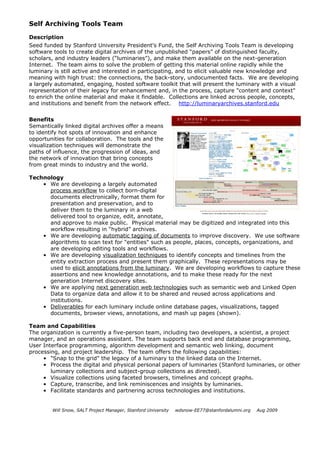Report
Share
Download to read offline

Recommended
Recommended
More Related Content
Featured
Featured (20)
Product Design Trends in 2024 | Teenage Engineerings

Product Design Trends in 2024 | Teenage Engineerings
How Race, Age and Gender Shape Attitudes Towards Mental Health

How Race, Age and Gender Shape Attitudes Towards Mental Health
AI Trends in Creative Operations 2024 by Artwork Flow.pdf

AI Trends in Creative Operations 2024 by Artwork Flow.pdf
Content Methodology: A Best Practices Report (Webinar)

Content Methodology: A Best Practices Report (Webinar)
How to Prepare For a Successful Job Search for 2024

How to Prepare For a Successful Job Search for 2024
Social Media Marketing Trends 2024 // The Global Indie Insights

Social Media Marketing Trends 2024 // The Global Indie Insights
Trends In Paid Search: Navigating The Digital Landscape In 2024

Trends In Paid Search: Navigating The Digital Landscape In 2024
5 Public speaking tips from TED - Visualized summary

5 Public speaking tips from TED - Visualized summary
Google's Just Not That Into You: Understanding Core Updates & Search Intent

Google's Just Not That Into You: Understanding Core Updates & Search Intent
The six step guide to practical project management

The six step guide to practical project management
Beginners Guide to TikTok for Search - Rachel Pearson - We are Tilt __ Bright...

Beginners Guide to TikTok for Search - Rachel Pearson - We are Tilt __ Bright...
Unlocking the Power of ChatGPT and AI in Testing - A Real-World Look, present...

Unlocking the Power of ChatGPT and AI in Testing - A Real-World Look, present...
Self archiving tools_team_v7
- 1. Self Archiving Tools Team Description Seed funded by Stanford University President's Fund, the Self Archiving Tools Team is developing software tools to create digital archives of the unpublished “papers” of distinguished faculty, scholars, and industry leaders (“luminaries”), and make them available on the next-generation Internet. The team aims to solve the problem of getting this material online rapidly while the luminary is still active and interested in participating, and to elicit valuable new knowledge and meaning with high trust: the connections, the back-story, undocumented facts. We are developing a largely automated, engaging, hosted software toolkit that will present the luminary with a visual representation of their legacy for enhancement and, in the process, capture "content and context" to enrich the online material and make it findable. Collections are linked across people, concepts, and institutions and benefit from the network effect. http://luminaryarchives.stanford.edu Benefits Semantically linked digital archives offer a means to identify hot spots of innovation and enhance opportunities for collaboration. The tools and the visualization techniques will demonstrate the paths of influence, the progression of ideas, and the network of innovation that bring concepts from great minds to industry and the world. Technology • We are developing a largely automated process workflow to collect born-digital documents electronically, format them for presentation and preservation, and to deliver them to the luminary in a web delivered tool to organize, edit, annotate, and approve to make public. Physical material may be digitized and integrated into this workflow resulting in “hybrid” archives. • We are developing automatic tagging of documents to improve discovery. We use software algorithms to scan text for "entities" such as people, places, concepts, organizations, and are developing editing tools and workflows. • We are developing visualization techniques to identify concepts and timelines from the entity extraction process and present them graphically. These representations may be used to elicit annotations from the luminary. We are developing workflows to capture these assertions and new knowledge annotations, and to make these ready for the next generation Internet discovery sites. • We are applying next generation web technologies such as semantic web and Linked Open Data to organize data and allow it to be shared and reused across applications and institutions. • Deliverables for each luminary include online database pages, visualizations, tagged documents, browser views, annotations, and mash up pages (shown). Team and Capabilities The organization is currently a five-person team, including two developers, a scientist, a project manager, and an operations assistant. The team supports back end and database programming, User Interface programming, algorithm development and semantic web linking, document processing, and project leadership. The team offers the following capabilities: • "Snap to the grid" the legacy of a luminary to the linked data on the Internet. • Process the digital and physical personal papers of luminaries (Stanford luminaries, or other luminary collections and subject-group collections as directed). • Visualize collections using faceted browsers, timelines and concept graphs. • Capture, transcribe, and link reminiscences and insights by luminaries. • Facilitate standards and partnering across technologies and institutions. Will Snow, SALT Project Manager, Stanford University wdsnow-EE77@stanfordalumni.org Aug 2009
